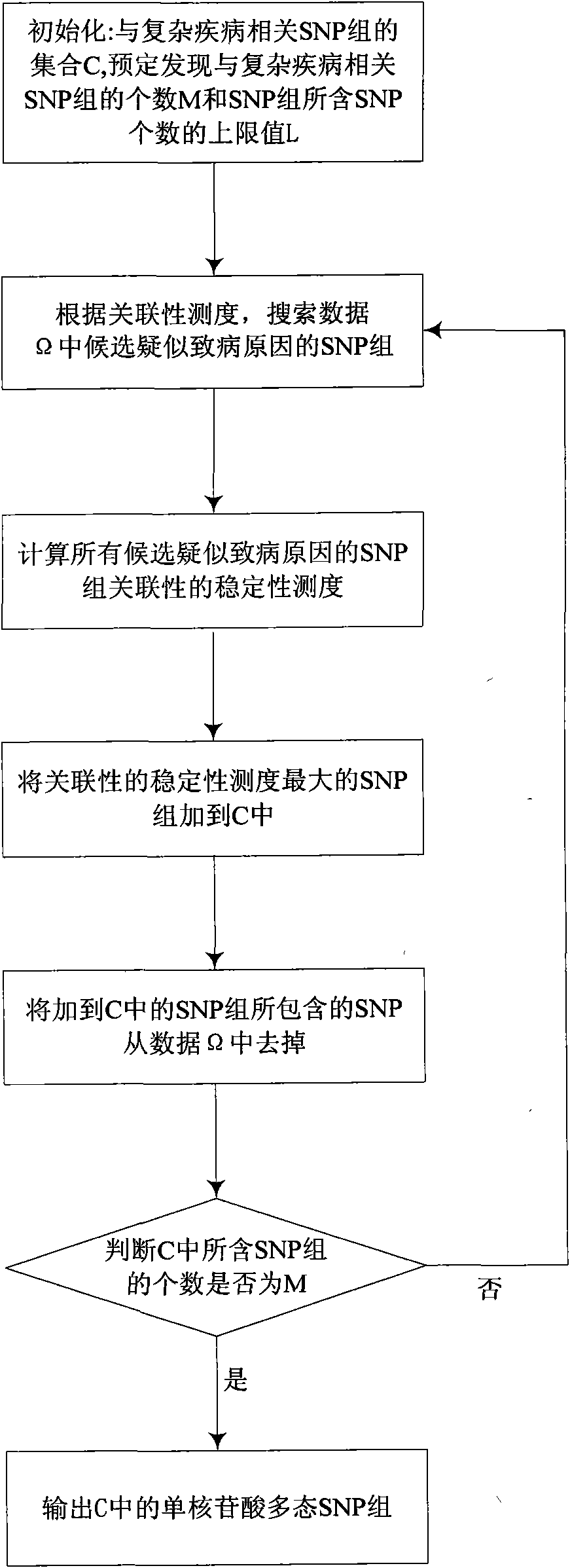Method of discovering SNP group related to complex disease from SNP information
A disease and data technology, applied in the field of data processing, can solve the problems that the discovery of multiple SNP groups cannot be used, and the large-scale calculation amount cannot use the whole genome data, etc.
- Summary
- Abstract
- Description
- Claims
- Application Information
AI Technical Summary
Problems solved by technology
Method used
Image
Examples
Embodiment Construction
[0035] refer to figure 1 , the specific implementation steps of the present invention are as follows:
[0036] Step 1, preprocessing and initializing the SNP data.
[0037] (1.1) According to the principle that the influence of any gene variation in homologous chromosome alleles on the disease can be treated equally, the SNP data is processed into data containing only 0, 1, 2, and 3, where 0 indicates missing data;
[0038] (1.2) order Indicates the preprocessed data, where N is the number of samples in the SNP data, x i ∈ {0, 1, 2, 3} d , d is the number of SNPs in the data, y i∈ {1, 2} for sample x i , 1 represents the disease group, 2 represents the control group, y=[y 1 ,y 2 ,...,y N ];
[0039] (1.3) Let C be the set of SNP groups associated with complex diseases, initialized to be empty; let M be the number of SNP groups that are scheduled to be found associated with complex diseases, and the default value is 6; let L be a single nucleotide polymorphism The up...
PUM
 Login to View More
Login to View More Abstract
Description
Claims
Application Information
 Login to View More
Login to View More - R&D
- Intellectual Property
- Life Sciences
- Materials
- Tech Scout
- Unparalleled Data Quality
- Higher Quality Content
- 60% Fewer Hallucinations
Browse by: Latest US Patents, China's latest patents, Technical Efficacy Thesaurus, Application Domain, Technology Topic, Popular Technical Reports.
© 2025 PatSnap. All rights reserved.Legal|Privacy policy|Modern Slavery Act Transparency Statement|Sitemap|About US| Contact US: help@patsnap.com



